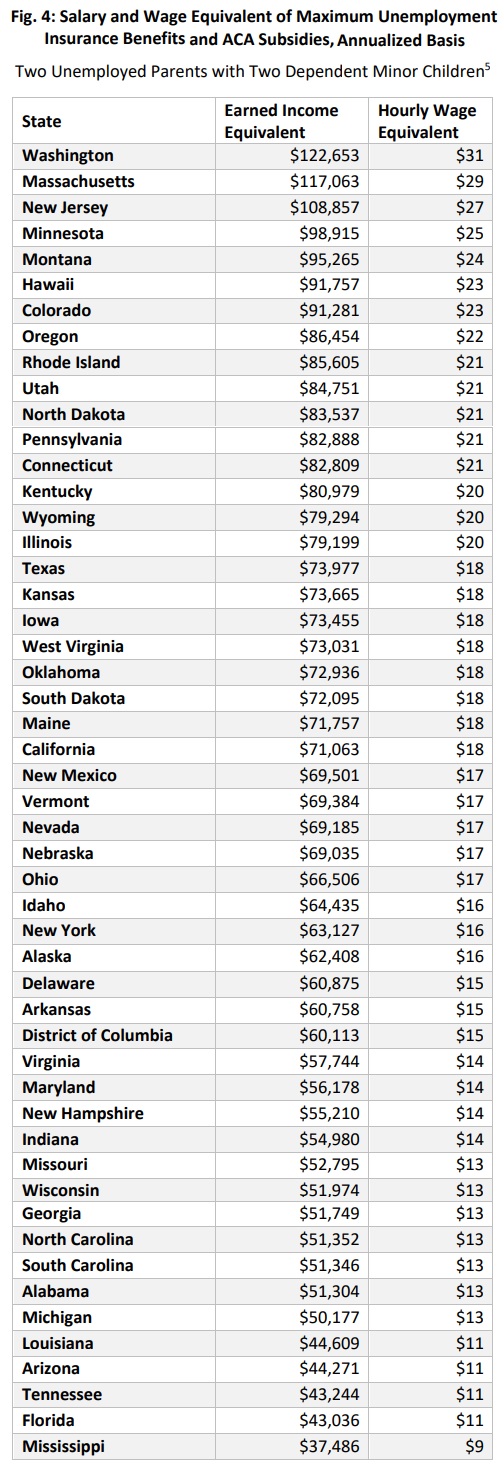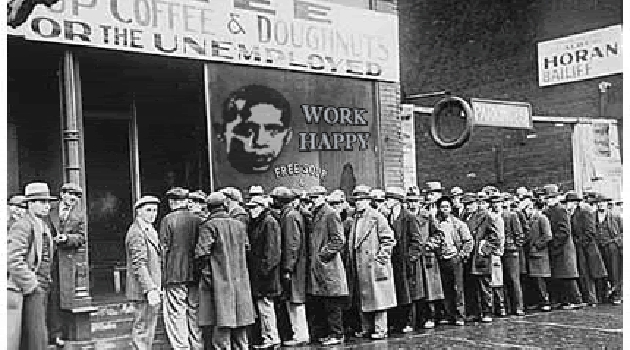When writing about employment and jobs, I often try to remind people about a handful of important observations.
- A nation’s economic output is determined in part by the number of people gainfully employed.
- The share of working-age people with jobs may be more important than the unemployment rate.
- Worker compensation is determined by productivity and productivity is driven by investment.
- Government redistribution programs can make joblessness more attractive than employment.
Regarding the final point, a new report from the Committee to Unleash Prosperity contains some very depressing data. Authored by Prof. Casey Mulligan of the University of Chicago and E.J. Antoni or the Heritage Foundation, it shows how Americans can be lured into unemployment.
…with existing unemployment benefits and the dramatic recent expansion of ObamaCare subsidies, a spouse would have to earn more than $80,000 a year from a 40 hour a week job to have the same after-tax income as certain families with two unemployed spouses receiving government benefits. In these states, working 40 hours a week and earning $20 an hour would mean a slight reduction in income compared to two parents receiving unemployment benefits and health care subsidies. …In 24 states, unemployment benefits and ACA subsidies for a family of four with both parents not working are the annualized equivalent of at least the national median household income. …In more than half the states, unemployment benefits and ACA subsidies exceed the value of the salary and benefits of the average firefighter, truck driver, machinist, or retail associate in those states.
For American readers, here’s a look at how some states make it very attractive to rely on government.

The good news (if we’re grading on a curve) is that some of the numbers are not as bad as they were during the pandemic, when politicians decided to provide super-charged unemployment benefits.
On the other hand, Obamacare subsidies are becoming an ever-bigger drag on the job market.
The big takeaway is that the numbers above reflect the impact of just two social insurance programs. The numbers would look worse if various means-tested programs were included.
For those interested in that data, here are state estimates from back in 2013, before Obamacare was fully in effect.
And for those who like international comparisons, here’s a look at the nations with the biggest handouts.
P.S. If Biden’s proposal for per-child handouts is approved, it would become far easier for people to leave the labor force and rely on handouts.


